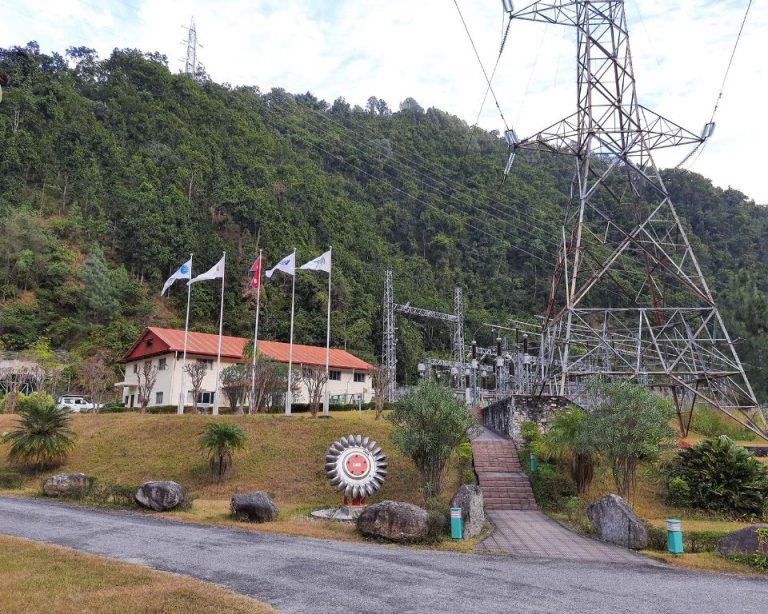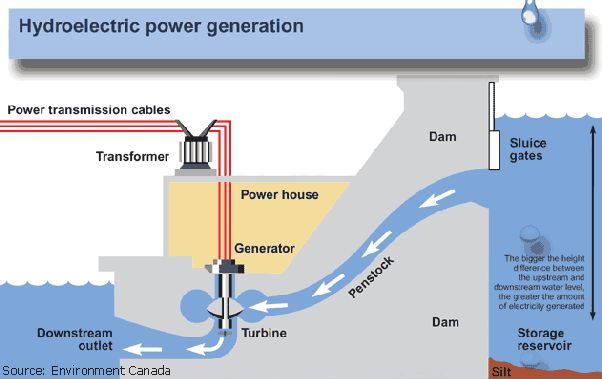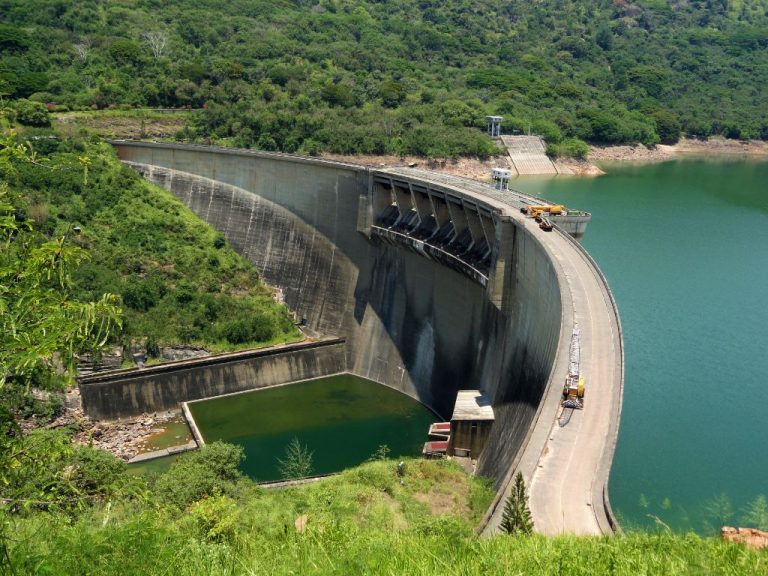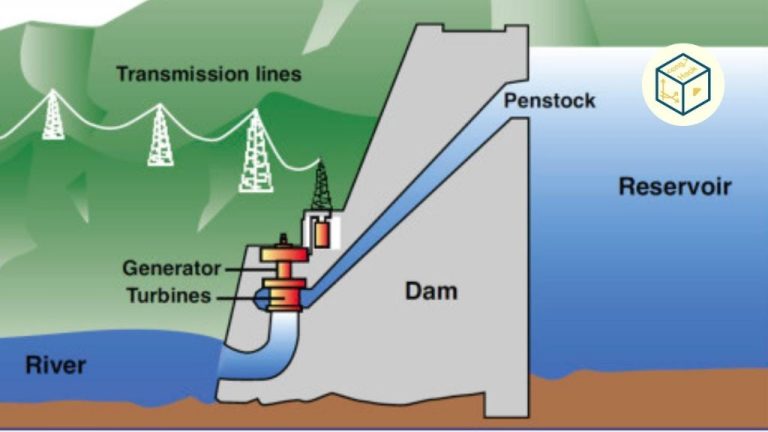Who Invented Hydro Power?
Hydroelectric power is the generation of electricity by harnessing the power of flowing or falling water. It is one of the oldest and largest sources of renewable energy, providing over 16% of the world’s electricity. The basic principle involves using the force of water flowing through dams and turbines to spin generators and produce power. Though the concept has been around for over 2000 years, major developments occurred in the late 19th and early 20th centuries with the construction of large hydroelectric dams and power plants. Today, hydroelectricity continues to be an important renewable energy source globally, providing affordable electricity and supporting the transition away from fossil fuels. However, hydroelectric projects can also have significant environmental and social impacts that must be carefully managed.
Early History
The concept of using flowing water to generate power dates back thousands of years. Ancient civilizations such as the Greeks, Romans, and Chinese used water wheels and watermills to grind grains, saw wood, and perform other basic tasks. The power of falling water was harnessed, but not converted into electricity.
The first use of hydropower to generate electricity was in the late 19th century. In 1882, the Vulcan Street Plant near Appleton, Wisconsin became the first hydroelectric power plant in the United States. It was built to provide 12.5 kilowatts of power to light two paper mills and a residence. According to the National Geographic, “In 1882, the world’s first hydroelectric power plant began operating in the United States along the Fox River in Appleton, Wisconsin.” (Source)
Pioneers
Some of the earliest pioneers of hydroelectric power were Thomas Edison, William Armstrong, and Lucien wheel company. Edison built the first hydroelectric power plant in the United States in 1882 in Appleton, Wisconsin, using a waterwheel to power a dynamo (Wikipedia, n.d.). This demonstration of incandescent lighting helped catalyze the use of hydro power as a major source of electricity.
Sir William George Armstrong was an English engineer who invented hydraulic machinery and built the first hydroelectric power station in the world in Cragside, Northumberland in 1878 (Encyclopedia Britannica, 1998). Using water from lakes on the estate, Armstrong’s pioneering hydro station lit his manor home.
Lucien wheel company installed the first hydroelectric power plant at Niagara Falls in 1879, pioneering the use of hydro power from natural features on a large scale (Library of Congress, n.d.). Their plant kickstarted the widespread adoption of hydroelectricity.
These early pioneers demonstrated the viability of harnessing the power of water flows for clean electricity generation. Their work paved the way for hydro power to become a major renewable energy source around the world.
References:
Wikipedia. (n.d.). John Samuel Eastwood. Retrieved from https://en.wikipedia.org/wiki/John_Samuel_Eastwood
Encyclopedia Britannica. (1998). Sir William George Armstrong. Retrieved from https://www.britannica.com/biography/William-George-Armstrong-Baron-Armstrong
Library of Congress. (n.d.). The first Niagara Falls power plant begins operation. Retrieved from https://www.loc.gov/item/today-in-history/september-26
Early Adoption of Hydro Power
The earliest adopters of hydro power were in North America, where hydropower played an instrumental role in the early industrialization and economic development of cities and regions near rivers and waterfalls. One example is Buffalo, New York, which harnessed power from nearby Niagara Falls in the late 19th century to become one of the first cities to have electric lighting. Hydropower was appealing because it provided a reliable, domestic source of power and electricity that could support manufacturing and industry.

Compared to alternatives like coal, early hydro power had several key advantages: it was renewable, more efficient, and produced no air pollution. The power from falling water was continuous and steady, unlike wind or solar power that fluctuated. And by transmitting electricity from hydropower sites, energy could be distributed to cities and towns far away. This allowed widespread access to affordable lighting and power, supporting urban development and economic growth.
Modern Systems
Modern hydroelectric dams and power plants were developed in the late 19th and early 20th centuries. Engineers made major advancements in turbines and generator designs that allowed for more efficient energy production from flowing water.
Some key innovations of modern hydroelectric systems include:1
- Dam and reservoir systems that regulate water flow and store energy potential.
- More efficient turbines like the Francis turbine and the Pelton wheel.
- AC generators that can transmit power over long distances.
Today, there are several main types of hydroelectric facilities:2
- Pumped storage systems that pump water uphill to reservoirs so it can flow downhill and generate electricity during peak demand.
- Run-of-river systems that harness the natural flow of rivers without dams or reservoirs.
- Tidal power stations that generate electricity from coastal tidal flows.
Engineers continue to find new ways to optimize hydroelectric power generation and integrate it with modern electric grids.
Global Use
Hydropower is utilized around the world as a major source of renewable energy. However, some countries generate significantly more hydropower than others. In 2021, the top hydropower generating countries were:
China generated a massive 1,274.63 billion kilowatt-hours, accounting for around 30% of the world’s total. With abundant water resources from major rivers like the Yangtze and Yellow River basins, China has heavily invested in hydropower dams and stations.
Other top generating countries are Canada (377 billion kWh), Brazil (362 billion kWh), and the United States (260 billion kWh). Norway is notable, producing 153 billion kWh annually despite its small population of 5 million.
The percentage of total energy production from hydropower varies greatly by country as well. Norway leads globally with over 95% of its electricity from hydropower. Brazil, Canada, and New Zealand also source 60% or more of their power from hydro.
Environmental Impact
Hydroelectric dams can have significant environmental impacts by disrupting ecosystems and habitats (https://www.science.org/doi/10.1126/sciadv.aau9875). The dams alter natural water flows, often reducing downstream sediment transport, nutrient flows, and fish migration routes. This can degrade habitats like estuaries that depend on a balance of river and sea water mixing (https://ir.law.fsu.edu/cgi/viewcontent.cgi?article=1120&context=lr).
There are mitigation measures to reduce environmental disruptions from hydroelectric dams. Fish ladders can be installed to enable fish to bypass the dam and continue migrating upstream. Controlled sediment flushing can help maintain downstream sediment levels. Minimum environmental flows can be mandated to maintain some natural river flow variations and habitats downstream of the dam.
Current Trends
Hydropower capacity and generation continues to grow globally, with over 26 GW of new installed capacity added in 2021 according to the 2022 Hydropower Status Report from the International Hydropower Association (https://www.hydropower.org/publications/2022-hydropower-status-report). Global installed hydropower capacity reached 1,360 GW by the end of 2021. The top countries for new installed capacity were China, Turkey, India, Ethiopia and Vietnam.
There have also been innovations in small-scale and low-impact hydropower technologies. Run-of-river systems that divert only a portion of a river’s flow are gaining popularity as a more sustainable option. New turbine designs like Archimedes screws and vortex turbines allow for electricity generation from low heads and small water flows. Micro-hydropower can provide decentralized electricity access using small dams, weirs or even water pipelines. Floating solar photovoltaic panels combined with hydropower plants are an emerging trend that takes advantage of existing infrastructure.
The Future
Hydroelectric power has a bright future ahead as countries continue to shift towards renewable energy sources. With global concerns over climate change and clean energy growth, hydroelectricity is poised to expand its role in the world’s electricity supply.
Most projections estimate strong growth for hydroelectric generation over the coming decades. The International Energy Agency predicts global hydro capacity could increase by as much as 50% by 2040 under current government renewable energy targets. This growth will be driven by major hydro projects underway in developing countries in Asia, Africa and South America.
Hydroelectricity will continue working hand-in-hand with other renewables like solar and wind to provide clean and flexible electricity generation. Pumped storage hydropower enables greater grid integration of intermittent renewables by storing energy for on-demand use. Hydro plants also complement solar and wind by providing reliable capacity. With global energy transition accelerating, hydro power’s flexibility and storage capabilities will help drive further expansion of renewable energy.
New technologies and research will also open up additional possibilities for hydro, from new pumped storage methods to small-scale and in-stream hydro applications. Innovation and investment in hydroelectricity will be key to realizing its full potential as a renewable solution tailored to local contexts around the world.
Conclusion
Hydro power has had a significant impact as a renewable energy source over the past century. Key innovations like dams, turbines, and generators allowed hydropower to become one of the first sources of renewable electricity. Today, hydroelectricity continues to supply 71% of renewable energy globally. With its storage capabilities and flexibility, hydropower complements intermittent renewable sources like wind and solar. While not without environmental impacts, advancements in fish ladders and minimum flow allowances have reduced the effects on local ecosystems. With plenty of untapped potential remaining, hydropower seems poised to continue as a major renewable electricity source into the future.





